“Anti-Nato” Antisemitism: Anti-Jewish Sentiment Related To The 1999 Nato Bombing Of Serbia

Posters with pictures of a World War II bomber with the Star of David and pictures of the collapsed buildings in Belgrade and bridges on the Danube in Novi Sad, with the message “14 years since the NATO bombing, their terror continues” appeared in Belgrade in March 2013. Various antisemitic narratives emerged in the aftermath of the NATO bombing of Serbia in 1999. These narratives still resurface from time to time, usually in the extreme-nationalistic and anti-American circles. While their focus is predominantly anti-American, in some of their segments they extend to traditional, typical, and well-known antisemitic stereotypes and myths. Founded on the myth about the “Jewish influence on the American foreign policy”, these narratives suggest that Jews were involved in the decision-making processes, or that Jews alone were behind the NATO bombings of Serbia. These antisemitic narratives may extend to imply responsibility and accountability of all Jews for their alleged role in NATO bombings of Serbia. Taking it further, there is a question of loyalty of Serbian Jews in this regard and accusations that their loyalty supposedly lies with the “World Jewry” rather than with Serbia and its people.
“The Lucky Jew”
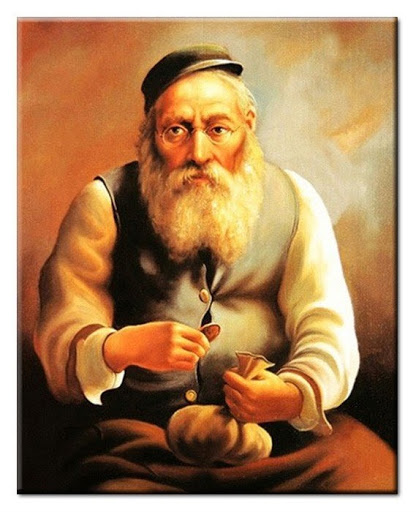
A rhyming “poem” in Polish [translation without rhymes] “In order to have money at home and never run out of it, you need to have a Jew at home who will guard the money.” “When in poverty, go to the Jew.” The aforementioned examples corroborate the popular belief that a statue or a painting depicting a Jew with a coin brings financial success. Although the origins of this belief are not entirely clear, one can definitely trace within it the stereotypical characteristic of Jews being wealthy and possessing high business skills.
The “Happy Merchant” Meme
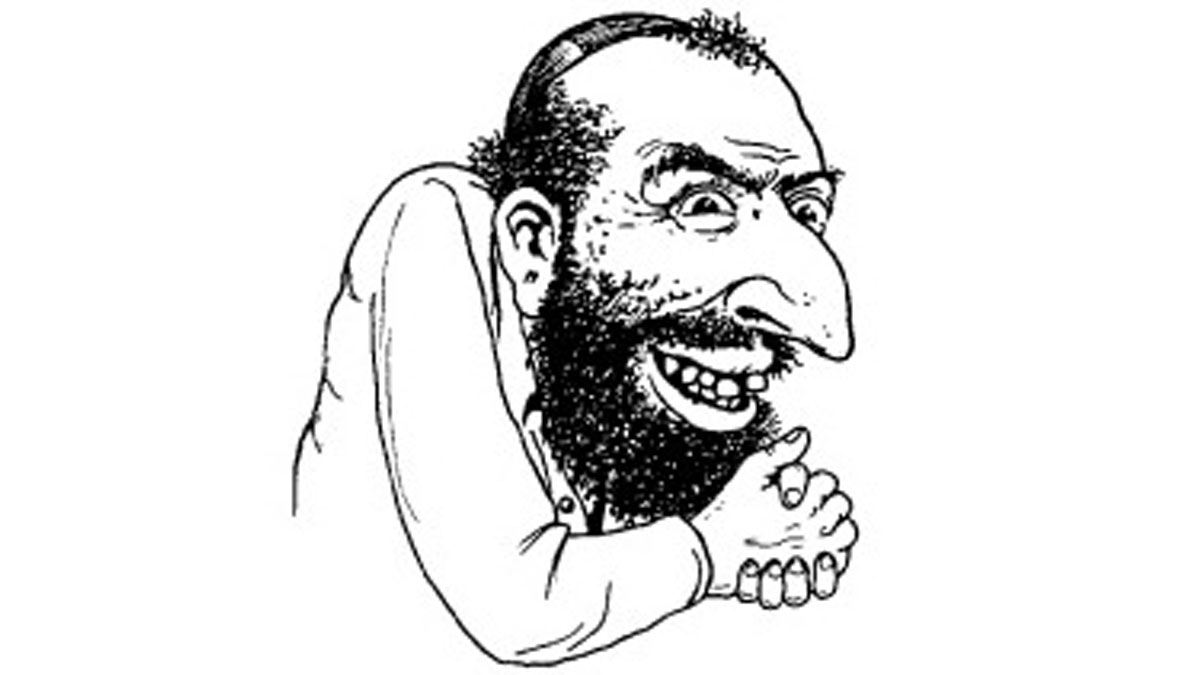
The “Happy Merchant” meme, also known as Jew-bwa-ha-ha.gif is a derogatory caricature of a stereotypical Jewish man using signifiers such as a kippah, long nose, full beard, malicious smile and the rubbing of hands, suggesting nefarious plans, for an antisemitic image. Posted on image boards where politics is discussed, such as 4chan/pol, it is used to spread antisemitic ideas.
Distorting The Holocaust
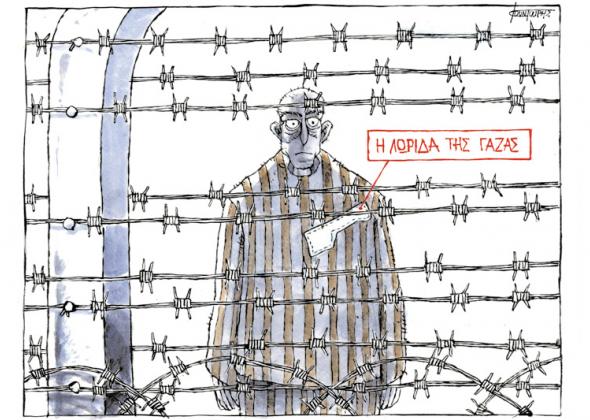
Anti-semitic caricatures in left-wing and traditional media compare Israeli politics with Nazi ideologies and the Shoah. In the first caricature, which is most representative of the trend of the left-wing press upon resurgence of the Arab-Israeli conflict, Israel’s interests are compared with Nazi crimes and Israeli citizens with neo-Nazis. The Gaza Strip is portrayed as a concentration camp surrounded by barbed wire. Since the Gaza Strip is populated solely by Palestinians, the imprisoned person in the caricature can be assumed to be a Palestinian. At the same time, the striped uniform with the map of the Gaza Strip upon it directly compares the situation of the Palestinians in the Gaza Strip to the situation of the Jews during the Holocaust and their stigmatisation with the Star of David.
Antisemitic Messages Near The Novi Sad Synagogue
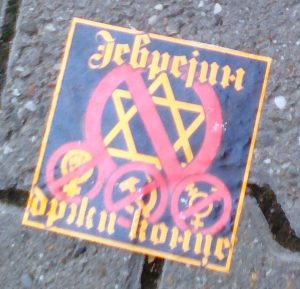
In November 2020, a message reading “The Jew pulls all the strings” was found stuck on the sidewalk near the Novi Sad Synagogue. One of the oldest anti-Jewish myths and stereotypes is the one about “Jewish power” and the “global Jewish conspiracy”. In its contemporary form, this myth represents Jews as a powerful, secret, global group, often referred to as a “Jewish lobby”, that manipulates governments, banks, financial institutions, academia, the media, film and entertainment industry, and other national and international institutions, for malicious purposes of Jewish world domination and control. This anti-Jewish myth has been present as one of the most prominent antisemitic narratives in various forms from the New Testament, the Protocols of the Elders of Zion, to anti-globalism and various contemporary conspiracy theories.
Greed, Money-lending and Usuary
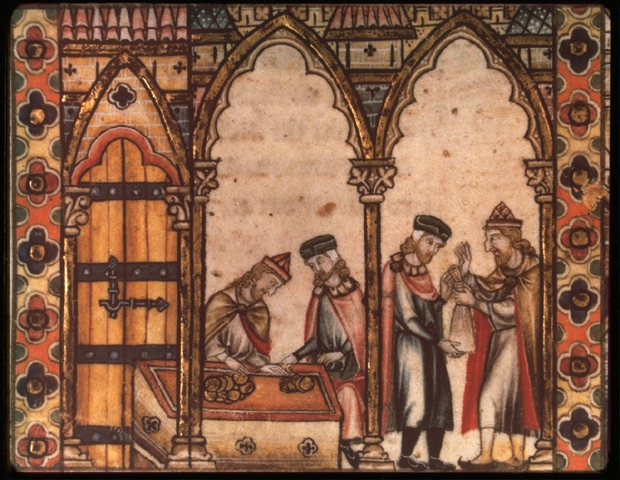
Since the 12th century, religious myths (Jews as deicides) have been complemented with economic stereotypes. Jews were described as rich and rampant as well as “money-lenders”, “bargainers” and “usurers” – a view still commonplace today. Excluded from land ownership, agriculture, and the Christian merchants’ and handicrafts guilds, Jews were increasingly limited to the small trade, peddler and junk trade. The money trading with interest played a special role, which according to church dogmatics violated divine doctrine and remained forbidden to Christians.
The Poet’s Scapegoat
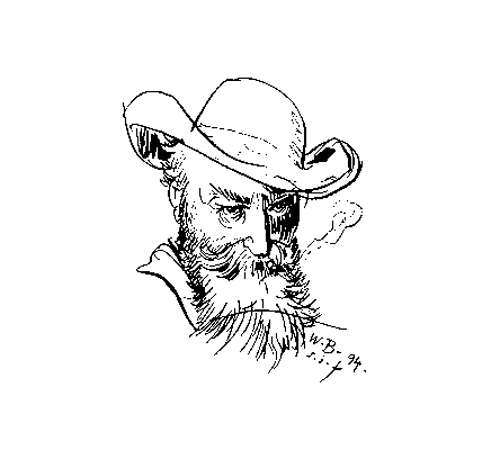
“And the Hebrew, sly and craven, Round of shoulder, nose, and knee, Slinks to the Exchange, unshaven And intent on usury” – Wilhelm Busch (1872). This English translation of a verse in Wilhelm Busch’s “Helen Who Couldn’t Help It” reflects a common trope in German antisemitism: the Geldjude, or the equation of Jews with money and usury, greed and parasitic financial capitalism. In his work Busch puts this opinion in the context of the worldview of a pious uncle who wants to save his niece from the depravity of the big city.
The Corfu Pogrom 1891

The pogrom in Corfu in April 1891 is an infamous example of a blood libel accusation, which stirred ethnic antagonism, religious passion and existing anti-Jewish stereotypes and got out of control. Jews in Corfu were accused of having murdered a girl in order to use her blood for ritual purposes. The Jewish community came under siege. The extreme violence had a spillover effect on the neighboring islands of Zakynthos and Lefkada, and the news shocked the public in Great Britain, France, Spain and Austria.

